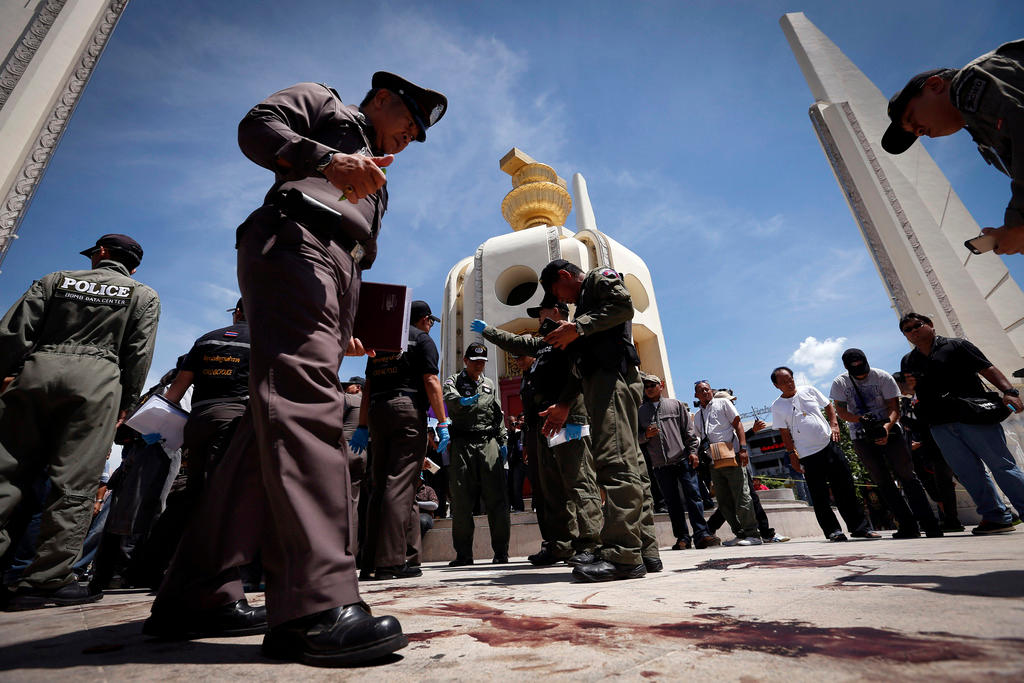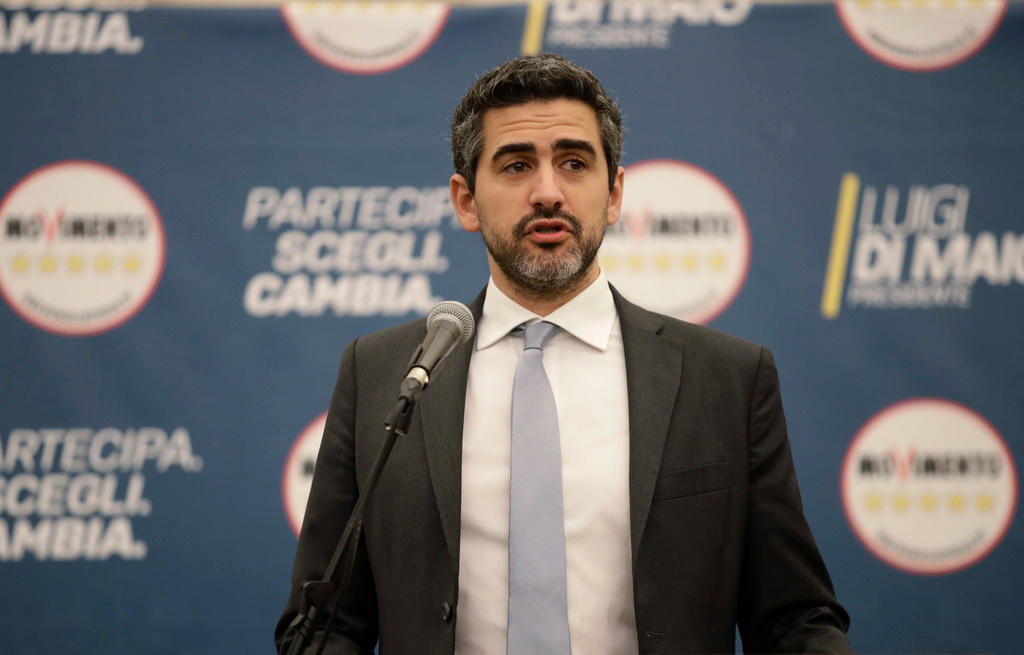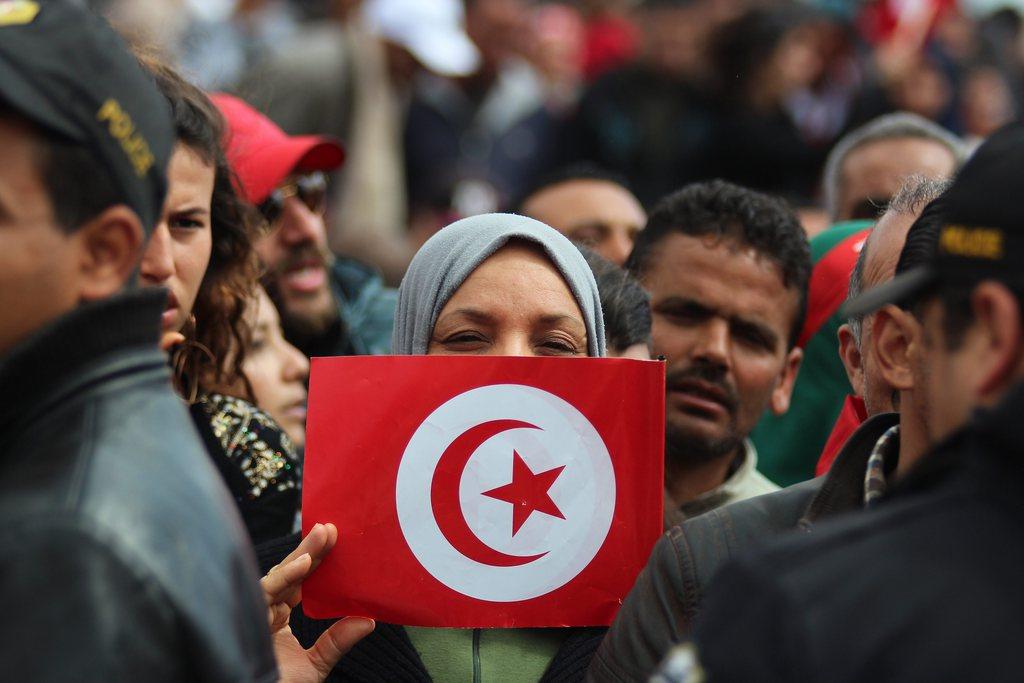Rome – enduring memories of changing times

Rome’s statues and historical ruins are good news. They tell us about wars, tyranny and destruction, but also about how from history emerged an extraordinary, fascinating and beautiful city.
When I tell Romans that I’ve been a resident of their city for the last 16 years and have no desire to live anywhere else, they’re often a little baffled. “But why?” they ask, looking a touch sorry for me. “We’re all trying to get away.”
Matthew Kneale is a novelist and nonfiction author. His books include Rome: A History in Seven SackingsExternal link and English Passengers, among other titles. This piece was first published at Zócalo Public SquareExternal link. Kneale will be one of the opening speakers at the 2018 Global Forum on Modern Direct DemocracyExternal link.
It’s true that Rome, which has never been an easy place to make a living, is struggling these days. The economy is stagnant, I’ve never seen so many homeless and beggars on the streets, and many Romans are visibly frustrated. It’s no wonder that populist parties are riding high.
So why be here? Leaving aside the city’s superficial delights, like its superb climate and wonderful food, my own answer is simple – history.
I am aware of no other great city whose past has been so well-recorded for so long. We have some idea – often a very good idea – of what Rome was like, and what happened there, during each of the last 25 centuries.
Nor, in any other great city, has so much physically survived from the past through buildings and objects. If you know where to look, you can find souvenirs of the events that shaped Rome, allowing first-hand connections with great moments hundreds or thousands of years past.
Walls of history
In a modern hall at the back of the Capitoline Museum are what look like weathered stone walls. One has been excavated, and it can be seen descending deep into the ground. These are the foundations of classical Rome’s most important temple, to Jupiter Best and Greatest, which dominated Rome’s skyline for a thousand years.
Created 2,500 years ago by the last of Rome’s early kings, Tarquin the Proud, the temple was partly responsible for his being the last king. Romans became so aggravated by the building costs that they rebelled and took power. Look at these piles of stone and you are looking at the moment the Roman Republic was born.
Another temple, built five centuries later – the Ara Pacis, or Temple to Peace – is in a much better state, having been painstakingly reassembled from scores of fragments in the 1930s. By the time it was built, the Roman Empire ruled the Mediterranean world, and the republic was dead.
On the side of the temple you can see a relief depicting Rome’s ruler Augustus, his sidekick Marcellus, and their families and helpers walking in procession. It’s the portrait of a new elite: those who dismantled the republic. In its place rose an unstable military dictatorship, whose administrations would often be decided by civil war.
At the end of September (26-29) Rome is due to host the 2018 Global Forum on Modern Direct DemocracyExternal link.
It is the seventh edition of a world conference on active citizenship and participatory democracy that was launched in the Swiss town of Aarau in 2008.
After that, professionals and experts from government, media, academia and civil society met in Seoul (2009), San Francisco (2010), Montevideo (2012), Tunis (2015) and San Sebastián (2016). This year’s forum in the historical City Hall of Rome is focusing on the local level as the heart of democratic life and development.
swissinfo.ch and #DearDemocracy is a media partner of the forumExternal link.
Preserving its defeats
The Museum of Rome near Termini station captures the panic and anger of one such regime change. A decade ago, during excavations of the emperors’ Palatine Palace, a sceptre and two imperial standards were found in wooden boxes, carefully wrapped in silk. Dating showed they had belonged to Emperor Maxentius, who was defeated by the Rome’s first Christian emperor, Constantine, at the Battle of the Milvian bridge just north of Rome.
Looking at these objects, one can imagine the desperate moment when pagan Maxentius’s courtiers, learning that their emperor was vanquished and dead, hid his regalia of power to spite his successor.
Throughout the centuries, up until the modern age, Rome continued to preserve its own defeats. Look at the Papal Walls on the Gianicolo Hill, where in June 1849 Garibaldi’s soldiers heroically defended the city in a hopeless struggle against a much superior French army.
Or the Balcony of the Palazzo Venezia, where, on June 10th, 1940, Mussolini announced that Italy was at war with Britain and France (the crowd below was so unenthusiastic that a patriotic newsreel of the event had to be dubbed with cheers from sports events). And the Museum of the Liberation of Rome, used as a torture centre by the SS during the Nazi occupation of Rome.
And yet for all this history, Romans today remain unimpressed. “What use are monuments?” is a comment I’ve heard more than once. “Monuments are what’s dead and gone.”
I disagree. I don’t believe that history repeats itself, as every age is different – but I do believe it can offer useful clues about human behaviour.

Dictatorship to democracy
Romans have lived under every kind of political system, from oligarchy to theocracy, from dictatorship and monarchy to democracy. Often, they have lived under more than one at the same time. One can view Rome’s past as a vast case-study of humankind and politics.
And, for one thing, the case study can tell us of the frightening randomness of events. We like to think that great changes happen for important reasons – that they’re all but inevitable – but it’s rarely so. Huge and enduring transformations can come from the equivalent of a coin toss
If Maxentius had defeated Constantine at the Battle of the Milvian Bridge and hung on to his imperial sceptre, Christianity might never have dominated Europe as it did, and instead might have remained one religion among many.
If Mussolini had not been tempted into war in June 1940 his dictatorship might have endured, ever more sluggish and corrupt, for another decade or two. And if river fog had not risen from the Tiber early in the morning of May 6th, 1527, hiding the Holy Roman Emperor Charles V’s starving soldiers from Rome’s guns, Charles’s army would never have broken into Rome, the city would not have had to endure a horrific ten-month occupation, and Italy might not have been dominated by Spain for the next two centuries.
Messages from monuments
Rome’s monuments also hold warnings. However infuriating democratic government can be, beware of chucking it away. Once you start down the road to dictatorship you never know who you might get. Rome has been ruled by a paranoid schizophrenic (Caligula), a talentless wannabe singer (Nero), and murderers far too numerous to list – including some popes.
Mussolini despised the elected rulers who preceded him and yet, for all their faults, their rule was far more effective and less corrupt than his. Under democracy Italy thrived economically and was prepared for war. Under fascism the economy stagnated, and the country’s military was in a hopeless state.
Another warning that seems especially relevant these days is that democracy’s worst enemy is inequality. At the heart of Rome’s first republic was a patriotic alliance between rich and poorer Romans. When the greed of the rich transformed Rome into a slave economy, and the poor lost their role in society, they also lost a sense of connection with the republic, and it died.
But Rome’s monuments have some good news for us, too. Somehow, out all of these wars and tyrannies and destruction there has emerged an extraordinary, fascinating and beautiful city. The most important thing about Rome is that it endures.
The views expressed in this article are solely those of the author, and do not necessarily reflect the views of swissinfo.ch.

In compliance with the JTI standards
More: SWI swissinfo.ch certified by the Journalism Trust Initiative














You can find an overview of ongoing debates with our journalists here . Please join us!
If you want to start a conversation about a topic raised in this article or want to report factual errors, email us at english@swissinfo.ch.